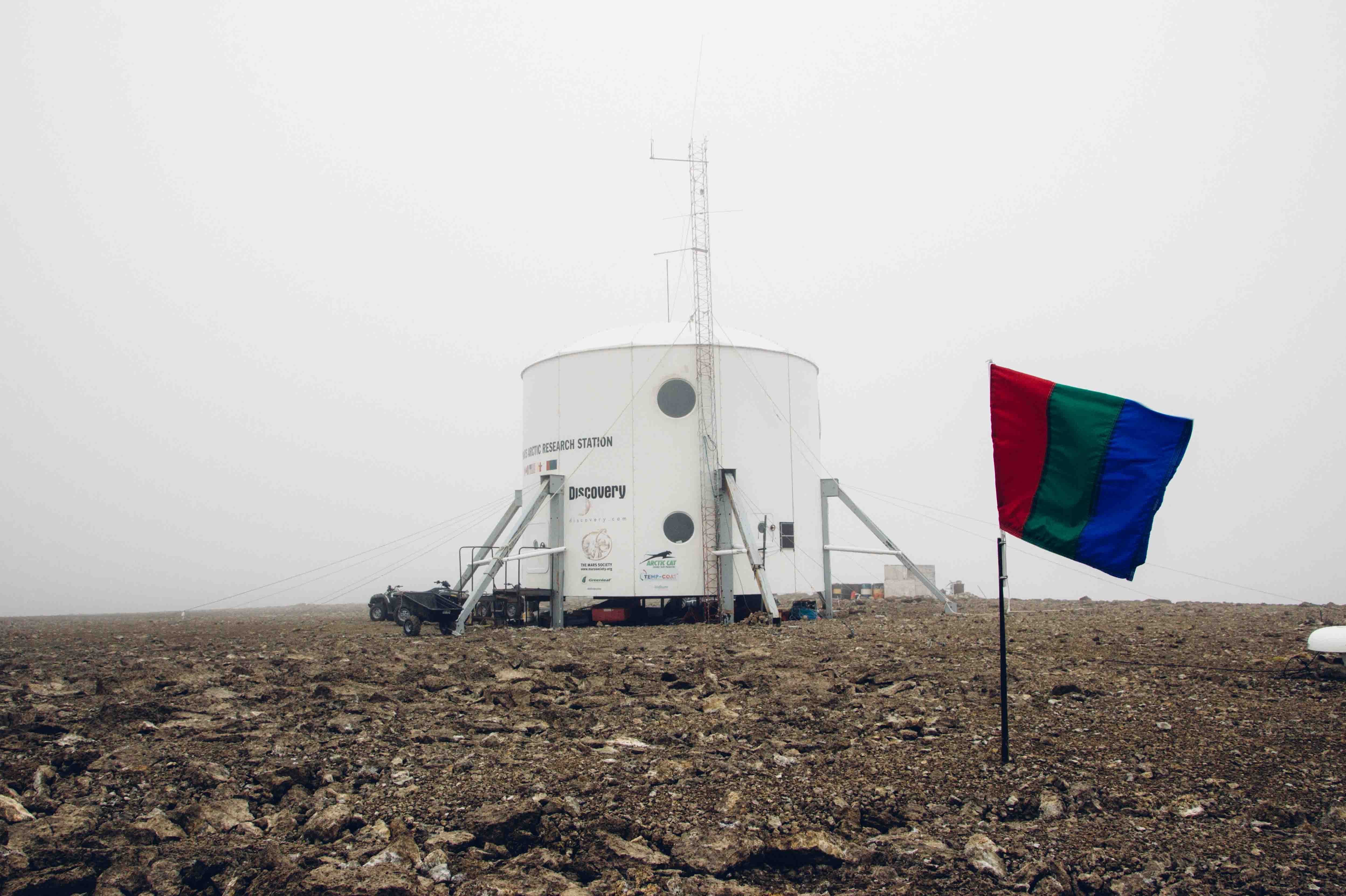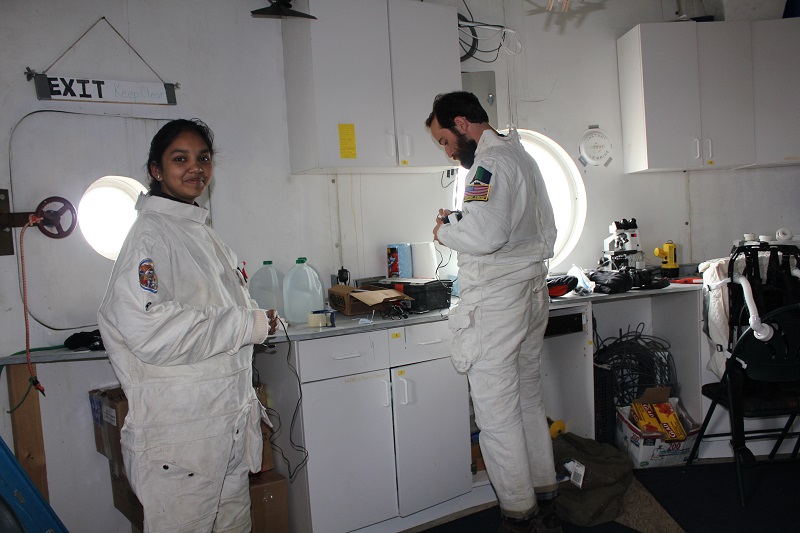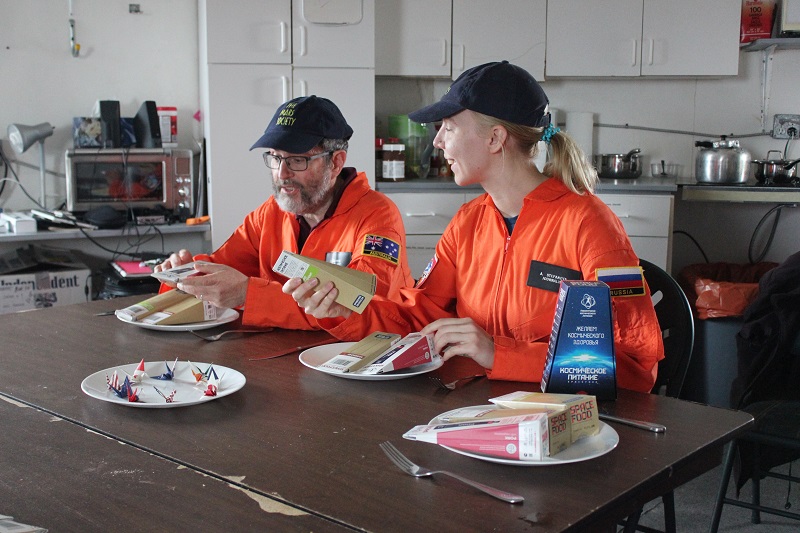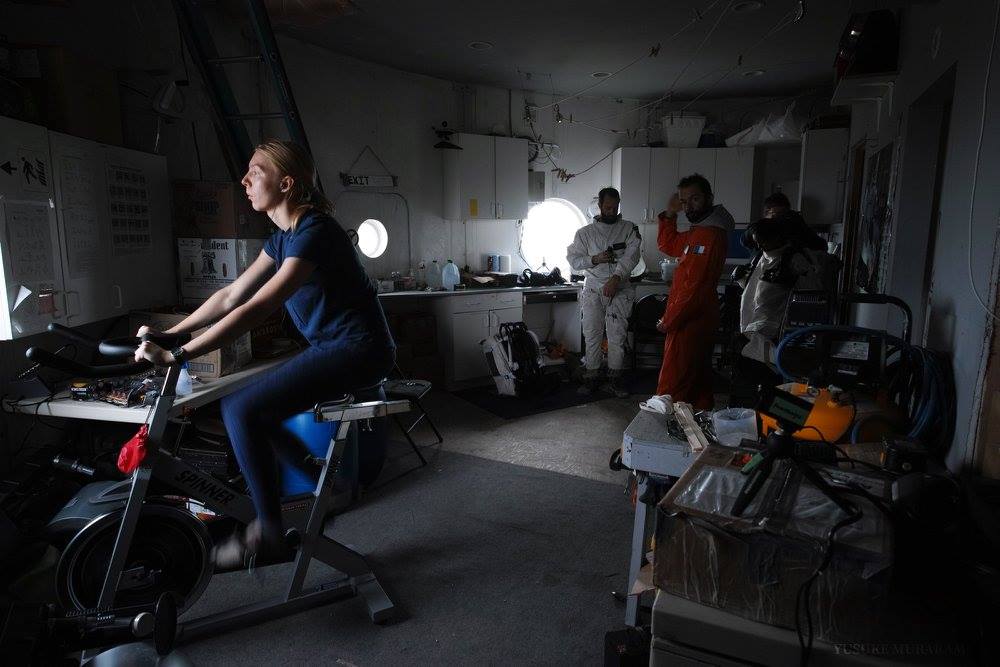
Notes from Mars 160: Our Home on 'Mars'

On June 22, The Mars Society launched the second phase of its ambitious Mars 160 Twin Desert-Arctic Analog simulation to study how seven crewmembers could live, work and perform science on a true mission to Mars. Mars 160 crewmember Paul Knightly is chronicling the mission, which will spend 60 days in the Canadian arctic at the Flashline Mars Arctic Research Station (FMARS) on Devon Island after completing a similar 80-day mission at the Mars Desert Research Station (MDRS) in southern Utah in 2016. Here's his third dispatch from the mission:
This week I figured I would give you a tour of our home on "Mars" — the Flashline Mars Arctic Research Station, or FMARS for short. Let's start from the outside and work our way inside. At 2 stories tall and 25 feet (8 meters) in diameter, FMARS predates and is nearly identical to its sister station in Utah where we spent the first half of our mission, the Mars Desert Research Station (MDRS).
Looking around from outside the station, it is easy to see why this location was selected. As we walked up to FMARS for the first time last month, it felt like I had been transported into an image captured by one of the Mars rovers. Large boulders are strewn about the polar desert without any vegetation in sight. Only a few species of lichen and flowers are hardy enough to survive in this harsh climate, and the few species of animals that call Devon Island home have made themselves scarce in our presence. And then there's the six of us living in a two-story habitat on the rim of an impact crater. [Inside Mars 160: The Mars Society's Red Planet Simulation in Pictures]

Just inside the main airlock on the first floor is the EVA Preparation Room, where we get ready for our extravehicular activities and store our spacesuits. This room leads into the rest of the first floor, which consists of lab space and work benches where we prepare samples and work on engineering problems including spacesuit maintenance and equipment repair. The bathroom and shower are behind the engineering work space — but more on that later.
Climbing a ladder leads to the second floor that consists of the main living area, including the kitchen and our state rooms. In the middle of the room, a kitchen table doubles as a conference table, around which stories and meals are shared and preparations are made for the day's field activities. As with many homes, a lot of life happens in our kitchen at FMARS.
Between our time on the Mars 160 mission and other missions to MDRS, we have all found that meal preparation and fixed eating times are essential to the emotional health of the crew. Food is an interactive experience that ensures the entire crew is involved in at least a few shared activities and moments each day. We all generally prepare at least one major meal (lunch or dinner) per week, ranging anywhere from soup at lunch to a minor feast at dinner.
In just the past week, we have tested the culinary limits of our food supply. I cooked up a taco night on Saturday, which required me to make tortillas from scratch and to use Spam as a stand in for beef. Call it a Tex-Mex/Martian fusion dish. Then, on Monday, Yusuke spent the better part of the day preparing a dish he called "Red Water," which was a mix of almost everything in the kitchen minus the sink. I would call it a blend between curry and chili, but it was surprisingly tasty with a generally sweet and rich flavor. [Mars 160 Coverage: Training for a Manned Mission to Mars]
Get the Space.com Newsletter
Breaking space news, the latest updates on rocket launches, skywatching events and more!

A meal that we look forward to twice per week comes courtesy of Anastasiya, who brought with her a supply of Russian space food courtesy of Spacefood Laboratory, based in Moscow. Spacefood Laboratory has been supplying food to the Russian space program since the 1950s and has recently expanded its market to include outdoor enthusiasts and rescue crews that all benefit from the easily prepared and nutritious dishes. The meals are my first introduction to the Russian palette, and dishes have ranged from borscht soup to a dessert of cottage cheese with sea-buckthorn. Naturally, almost all of these dishes come out of a tube — just as astronauts and cosmonauts would find them served up on the International Space Station(ISS).
Back to the tour of FMARS. Each person sleeps in a state room that leads into the kitchen and consists of a single bunk bed with adjacent space for clothes and personal items. Some walk-in closets are bigger than our state rooms, but on a mission to Mars space is critical, and the cramped quarters are a worthwhile price to pay for the sake of exploration. The rooms are big enough to provide us with private space when we need it, but much of our daily work happens out in the open.

Above the state rooms is an attic where we can store extra food and supplies in addition to the water basin. Our water supply comes from a freshwater stream fed by snow melt that is about 0.6 miles (1 kilometer) from FMARS. The crystal-clear water is probably clean enough to drink without any additional filtration, but we boil all of our drinking water anyway to be safe. Water must be collected manually with the help of our ATVs every couple of days and is done "out of sim" in normal cold-weather gear. Once it is brought back to FMARS, a cistern in the EVA Prep Room is filled and then pumped to our upstairs water basin. From the basin, the water is then distributed to the kitchen and bathroom through a gravity and pump-on-demand system.
Which leads us back downstairs to the bathroom. People always want to know how astronauts "go" in space. Our bathroom at FMARS actually consists of two separate rooms for the toilet and shower. The shower is like any you might find in a normal house. It is attached to a water heater that we turn on during our weekly shower days — just one shower per person, per week here at FMARS. Daily hygiene is handled by a combination of no-rinse shampoo, baby wipes, and the occasional sponge bath. Laundry is a more difficult task that is usually performed using the shower as well, but without a dryer, clothes must be hung up to dry.
With all fanfare reserved for the end of our tour, we arrive at the toilet. Astronauts traveling to Mars will have to contend with human waste storage and disposal, which left unchecked could be quite voluminous for a crew of six or more on a two-year roundtrip mission. While MDRS is equipped with a standard septic system, waste handling at FMARS is actually more analogous to the constraints of a surface mission to Mars. [How Will a Human Mars Base Work? NASA's Vision in Images]
At FMARS, waste is segregated by liquids and solids. Liquid waste is stored in 55-gallon drums that are flown out at the end of the mission, and solid waste is burned in an on-site incinerator with other solid trash. This "leave no trace" mentality of wilderness exploration will also apply to the first missions to Mars, and is already being tested today. For instance, on the ISS, liquid waste is now being recycled into water usable for drinking. Solid waste on a Mars mission could perhaps be recycled into fertilizer to grow plants; otherwise, a storage and disposal system will need to be devised for early missions until infrastructure is built to handle it on a larger, municipal scale.
That concludes today's tour of FMARS! I hope you've enjoyed this insight into our home on "Mars." It may not have all the luxuries of a modern home, but it is helping us to prepare for what the first astronauts will need as we venture farther into the solar system.
Editor's note: To follow The Mars Society's Mars 160 mission and see daily photos and updates, visit the mission's website here: http://mars160.marssociety.org/. You can also follow the mission on Twitter @MDRSUpdates.
Paul Knightly is a geologist and PhD student at the Arkansas Center for Space and Planetary Sciences at the University of Arkansas in Fayetteville. He is a member of The Mars Society's Mars 160 Twin Desert-Arctic Analog simulation, where he is conducting geological field research to better understand the arctic environment and its implications for Mars. Follow The Mars Society on Twitter at @TheMarsSociety and on Facebook. Original article on Space.com.
Join our Space Forums to keep talking space on the latest missions, night sky and more! And if you have a news tip, correction or comment, let us know at: community@space.com.









